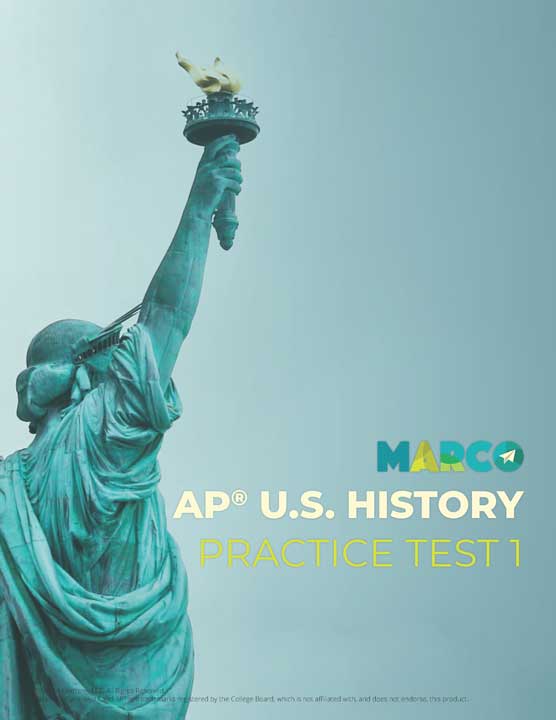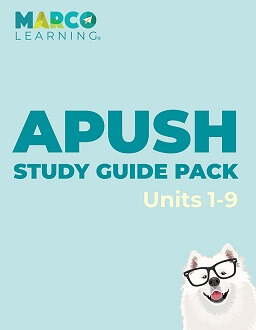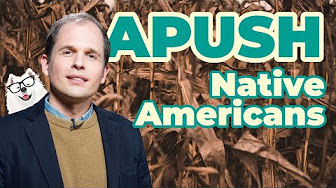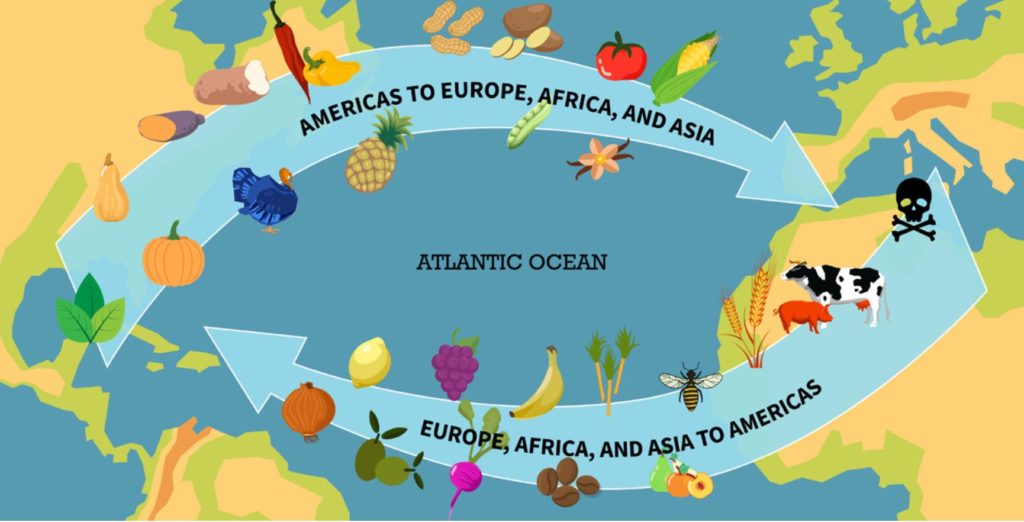APUSH Unit 1 (Period 1: 1491-1607)
The first unit of the AP® United States History (APUSH) course focuses on the period from 1491 to 1607. The College Board estimates that this time period will make up about 5% of the content on the APUSH exam. This time period will not be the subject of a document-based question (DBQ), although evidence from this period could be used to earn the contextualization point.
Free Resources Available for Download:



UNIT OVERVIEW
Unit 1 of the APUSH course begins in 1491, a symbolic year that is inclusive of any year in the period before the Columbian Exchange began in 1492. Students are expected to describe what life was like in the Americas before European contact and how contact with Europeans forever altered the lives, cultures, and customs of American Indian societies.
Download a free study guide about Native American societies HERE.
Prior to European contact, American Indian tribes throughout the Americas had complex societies with distinctive social structures, political organizations, and religious beliefs. Along the American northwest, American Indians had a combination of permanent settlements and hunter-gatherer lifestyles. In the Great Plains, tribes followed the herds of buffalo and lived a nomadic lifestyle. In the American Southwest and modern-day Mexico, the American Indians cultivated maize. Maize (corn) was a staple crop that allowed tribes to develop a more sedentary lifestyle.
Christopher Columbus and the other early European explorers in the New World were motivated by a combination of economic and religious factors, sometimes described as “God, Gold, and Glory”. They were primarily looking for raw materials, especially gold, to take back to their countries to enrich their monarchs. This would bring them glory and prestige. They also felt that they had an obligation to spread Christianity. This combination often proved disastrous for native populations because American Indians were often ensnared into oppressive labor systems, like Spain’s encomienda system, and forced to abandon their native religious practices. The American Indian population was also drastically reduced by diseases brought over by Europeans.
Download a free study guide about the Spanish colonial system HERE.

A trade system gradually emerged, called the Columbian Exchange, that moved crops, animals, and even diseases from the Old World to the New World and vice versa. This system introduced American crops like potatoes, tomatoes, and corn to Europe and European crops like wheat, rice, and grapes to the Americans. The Columbian Exchange also brought slaves to the New World to farm cash crops and mine for precious metals.
Download a free study guide about the Columbian exchange HERE.
TIMELINE
1100 The Mississippian settlement at Cahokia (near present-day St. Louis) reached its peak population of over 10,000 inhabitants.
1492 Christopher Columbus made his first voyage to the Americas.
1512 Spain establishes the encomienda system.
1519 Hernan Cortes, a Spanish conquistador, began his war of conquest against the Aztec Empire.
1525 The first ship of slaves from Africa arrived in the Americas.
1542 Bartolomé de las Casas, a Spanish priest, published A Short Account of the Destruction of the Indies, resulting in the formal abolition of the encomienda system in the Spanish colonies.
KEY TERMS
Maize This crop, commonly known in the United States today as corn, was the most prevalent staple crop grown throughout the Americas at the time of European contact.
Christopher Columbus An Italian explorer who stumbled upon the New World after convincing the Spanish monarchs that he could sail across the Atlantic to India.
“God, Gold, Glory” Early European explorers were motivated by a desire to spread Christianity, enrich themselves and their monarch, and gain glory for discovering new lands.
Encomienda System A forced labor system developed by the Spanish that required American Indians to perform compulsory labor for Spanish colonizers.
The best way to get better at something is by practicing.
That’s why it’s so important that you take practice tests to help you get better at the AP U.S. History Exam. Only then can you expect to get a good score—and even improve your score.
Download your free AP® U.S. History practice test HERE.
Download your printable study guides for all of the units for AP U.S. History HERE.
 Help
Help